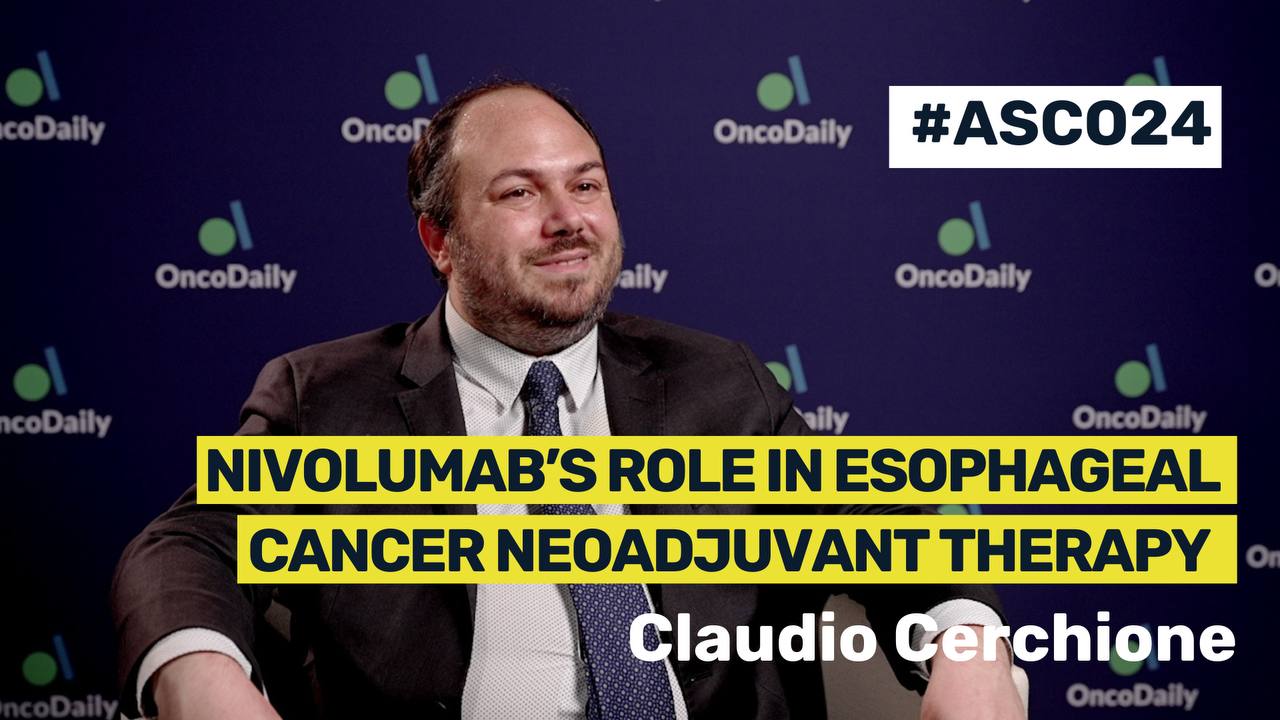The American Society of Clinical Oncology (ASCO) Annual Meeting is one of the largest and most prestigious conferences in the field of oncology. This year, the meeting took place from May 31 to June 4 in Chicago, Illinois. The event gathers oncologists, researchers, and healthcare professionals from around the world to discuss the latest advancements in cancer research, treatment, and patient care. Keynote sessions, research presentations, and panel discussions are typically part of the agenda, providing attendees with valuable insights into emerging trends and innovations in oncology.
This year, OncoDaily was at ASCO 2024 for the first time covering the meeting on-site. We had the pleasure of interviewing researchers who summarized the highlights of their work.
In this video, Claudio Cerchione, MD, PhD, Adjunct Professor of the Hematology Unit and medical director at Romagnolo Scientific Institute for the Study and Treatment of Tumors, shared their insights on “Exploring the role of the combination of FDG PET plus whole body MRI for staging newly diagnosed and relapsed/refractory multiple myeloma: A prospective trial”
My name is Claudio Cerchione, I work in Instituto Romagnolo per lo studio alla cura dei tumori in Amadori, located in the northern part of Italy, and it’s my pleasure and honor to present at this ASCO 2024 an oral presentation about the role of whole body MRI combined with PET-FDG in multiple meloma, newly diagnosed in relapsed refractory.
It is really surprising to see from our institutional study that the combination between the two diagnostic tools is changing in the outcome of our patients, particularly we have studied 73 patients, both newly diagnosed in the relapsed refractory, and we have seen that whole body MRI has an accuracy of 97%, but particularly we have seen that in 26% of the patients the outcome had changed thanks to the combination, thanks to the combining of whole body MRI on the PET-FDG result.
This means that some more lesions are not discovered only by FDG-PET, but can be better clarified before that they give symptoms and signs, thanks to the introduction of high definition whole body MRI, and this means that about one patient of four can change the outcome, can change his journey anticipating the treatment in terms of newly diagnosed approach or in terms of switch to another therapeutic approach in relapsed refractory setting.
This is only the first part of a multi-omic study that we are performing in our institution, in which we are characterizing from a molecular point of view our patients. We want to clarify new biomarkers and we want to study also the patient in terms of MRD negativity from a biomarkers-driven approach.
We dream that thanks to this, together with the clinical characterization of our patients, we will be able to define a new prognostic score, and I think that in these years we have concentrated a lot on the revolutioning of the therapeutic scenario of multiple myeloma.
We have seen many new drugs, new combinations approved and registered, but I think that the optimization of diagnostic tools means optimizing the treatment of our patient, means the optimization of those of the drugs, of the selection of the exact therapy, and also about the improving of the outcome of our patient.
That’s why I think that also thanks to the improving of diagnostic tools in terms of studyation and restudiation, we continue to run towards the cure of multiple myeloma, and this is the best wish that we give to our patients, to their caregivers, and to all myeloma researchers around the world.
More videos and content from ASCO 2024 on OncoDaily.
